-
Posts
949 -
Joined
-
Last visited
Content Type
Profiles
Forums
Blogs
Gallery
Events
Store
Posts posted by David Gregory
-
-
Spelling changes in real names like this are not unusual in German.
At around the same time that the P?llath/Poellath variants were in use, even the names of towns and cities were changing. When I travel to work by train, I pass the gable end of a building next to the railway embankment that still bears a faint sign with the name Coeln (today's K?ln) from the time when the line was part of the Coeln-Mindener Eisenbahngesellschaft (later swallowed by the Prussian state railway).
0 -
The seller has been offering these items for over a year now, probably longer in fact, and offers the same awards with the same ageing/finish with monotonous regularity
Most of the crosses and medals he sells display the same poor casting quality and the same finish, which ranges from a dull silver-grey to a coppery finish, depending on the base metal, usually discoloured by either the casting process or what looks like an acid wash.
Christian pointed out one of his typical cast fakes at http://gmic.co.uk/index.php?showtopic=1205
To be honest, I am not entirely sure about the Bavarian crosses, but I find it impossible not to condemn them by association. They consistently lack the bright finish usually found on the majority of known originals.
The Iron Crosses have been discussed at WAF before and i see no reason to doubt the conclusions drawn there.
I know that at least one member here has bought examples of the Verdienstkreuz f?r Kriegshilfe in aluminium and silver, but I will leave it up to him or anyone else who has handled one to comment in detail.
I posted an example of a Hessen Kriegerehrenzeichen in Eisen he offered a while ago at http://gmic.co.uk/index.php?showtopic=1073...etensammlerclub
Watch his auctions for a while and you will see how he keeps offering the same awards with exactly the same finish time after time.
The Bavarian crosses, if they are also fakes, which I strongly suspect, represent an entirely new and expensive copy that should be treated with caution.
Perhaps I am paranoid, but there are enough other collectors who consider his goods to be bad.
Send him a mail and ask him about the originality of his pieces. The reply he sent me was careful and evasive.
David
0 -
A little less hard on your eyes:
Bavarian Milit?r-Verdienst-Kreuz 2. Form 1905 - 1913, 2. Klasse. Now on offer, if you dare, for only EUR 400 in eBay auction #6224170924
[attachmentid=15141]
[attachmentid=15142]
Another slow mover, but he does sell a few with monotonous regularity - Milit?rdienstauszeichnung Baden f?r 15 Jahre, Spange for only EUR 180 offered in eBay auction #6224169758. Described as being made of solid silver, marked 800 J.PETRY on the back:
[attachmentid=15144]
His fake iron crosses also sell well, but someone else can post images of them. At least he is careful enough to use different images for each EK that he offers.
He has also offered Hindenburg crosses in the past, but I can't find an image of one for the time being.
David
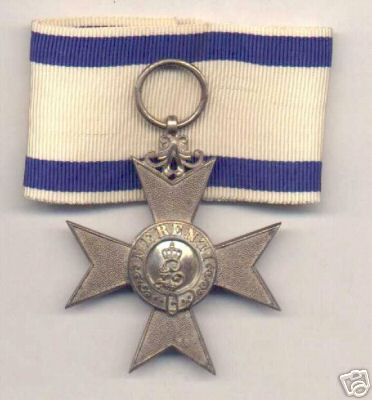
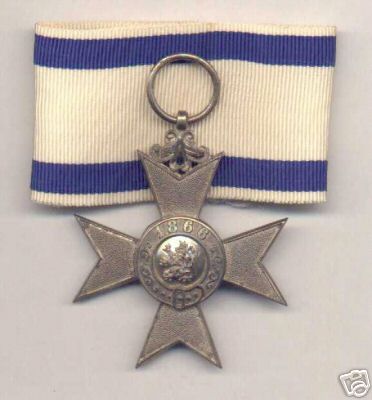



 0
0 -
Braunschweig war merit cross 2nd class "An excellent bronze piece in very good condition" sold in eBay auction #6550410632 for EUR 46. This is one the poorer quality examples that he offers regularly:
[attachmentid=15134]
[attachmentid=15135]
Erinnerungskreuz TREUEN KRIEGERN, made of solid bronze, sold in eBay auction #6197657398 for EUR 24.99 (his normal price):
[attachmentid=15137]
Migrane-inducing Verwundetenabzeichen in Gold sold in eBay auction #6197654518 for EUR 66:
[attachmentid=15138]
He offers all of these items quite regularly.
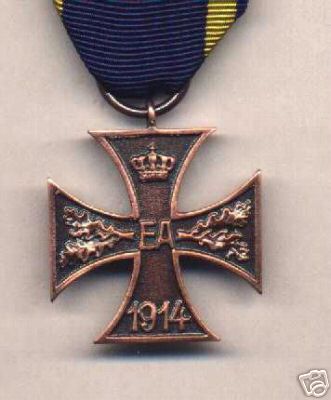
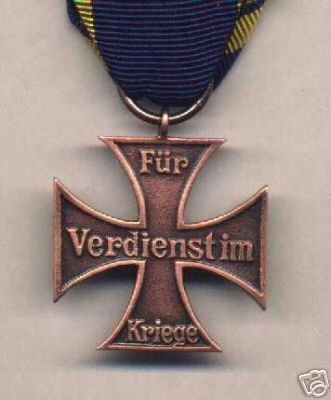
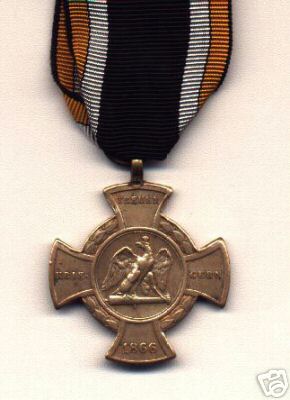




 0
0 -
Verdienstkreuz Kriegshilfe made of aluminium, eBay auction #6207207411, sold for only EUR 40 (he usually sells them for EUR 65):
[attachmentid=15131]
[attachmentid=15132]
Verdienstkreuz Kriegshilfe made of solid silver, eBay auction #6206473187, sold for his usual price of EUR 75:
[attachmentid=15133]
The only good crosses I know of are made of finely-cast zink. Are any real ones in aluminium or silver actually known?
David
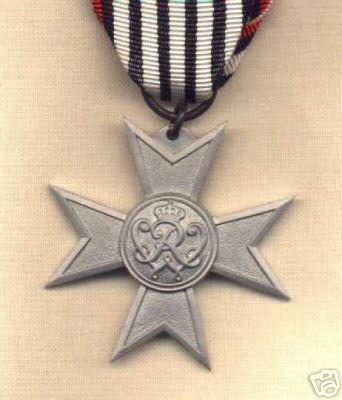
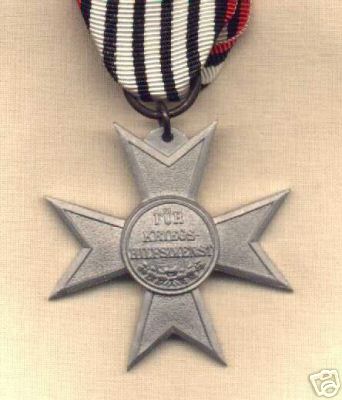



 0
0 -
A number of Imperial awards that are generally accepted as fakes are regularly offered on German eBay by seller raritaetensammlerclub, who also offers his products on his website at http://www.ordensammler.com
By a strange coincidence, some of his goods have also been bought and sold by German eBay user cetra2003 who is based in T?bingen. The payment details for http://www.ordensammler.com
give a bank account belonging to Christine Traub of T?bingen. Am I paranoid or is it just a coincidence that cetra2003 (C_TRA___) is also based in T?bingen?
baff002, a well-known purveyor of fake medal bars, also buys ribbon stock from raritaetensammlerclub. Another coincidence? Perhaps.
Before they disappear, here are a few of the latest eBay offerings by raritaetensammlerclub and the prices they fetched. They were all offered with a full description of the materials and he even quotes the OEK number. However, the description carefully avoids any mention of originality.
Bavarian Milit?r-Verdienstkreuz 3. Form 1913 - 1918, 2. Klasse, mit Schwertern und Krone, eBay auction #6221813779, sold for EUR 162.01, described as made of solid silver:
[attachmentid=15125]
[attachmentid=15126]
Bavarian Milit?r-Verdienstkreuz 3. Form 1913 - 1918, 2. Klasse, mit Krone, eBay auction #6221809607, sold for EUR 200, described as made of solid silver:
[attachmentid=15127]
[attachmentid=15128]
Bavarian Milit?r-Verdienst-Kreuz 2. Form 1905 - 1913, 2. Klasse, with swords, eBay auction #6217894041, sold for EUR 685
 , described as all parts made of solid silver. Perhaps this scored such a high price due to the lack of enamel, which makes it a little unusual:
, described as all parts made of solid silver. Perhaps this scored such a high price due to the lack of enamel, which makes it a little unusual:[attachmentid=15130]
Your thoughts?
David
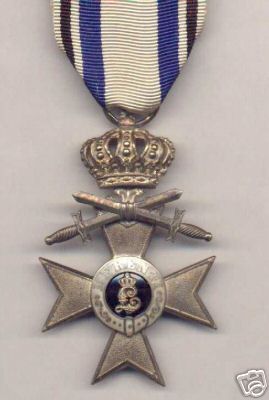


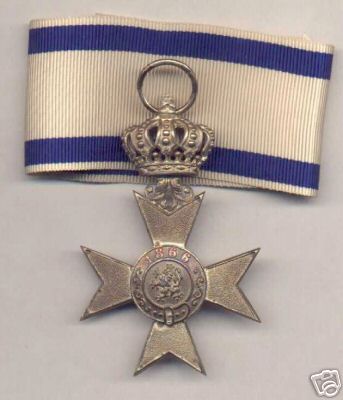
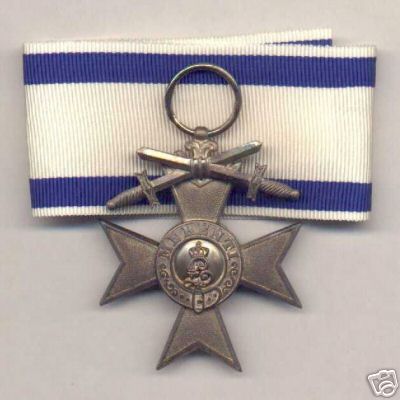




 0
0 -
Guys,
I knew you wouldn't leave me in the dark.
Thanks to one and all for an amazingly swift and concise biography of Hauptmann Schmidtmann.

David
0 -
I know that certain members here seem to have an uncanny knack of identifying otherwise anonymous medal bars to put a name to a face in a photograph.
This image was taken by a photographer in Minden, the garrison town of 26. Infanterie-Brigade, Infanterie-Regiment 55 and Feldartillerie-Regiment 58 among others, and bears a faint comment in pencil on the back.
The comment reads: "Taken on 1st August, one day before departing in field grey uniform. For the 5th September 1914".
Despite the fact that the bar only has four awards with which the officer shown might be identified, is this combination enough?
The Centenary medal, SEHO and Lippe-Detmold Honour Cross of the House Order seem obvious to me, but I cannot identify the fourth cross, which is the only one with swords.
He was in service in 1897, received two house orders without swords, presumably for peacetime service, and I assume the fourth award was for service involving some sort of action. China or South-West Africa spring to mind, but are these precluded by the lack of awards for service in China or Africa? Might they have been added later considering that this bar may have been put together as late as mid 1914?
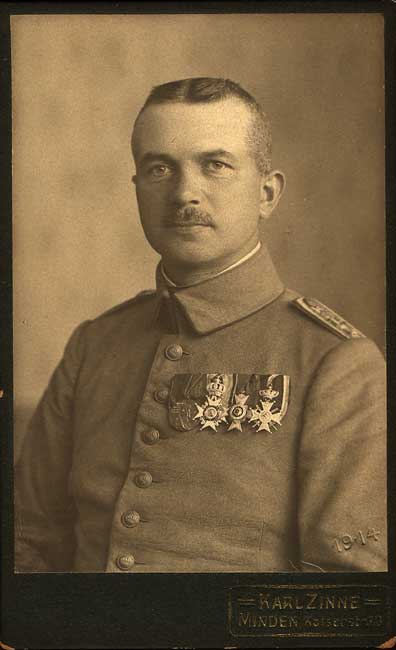
Medal bar detail:
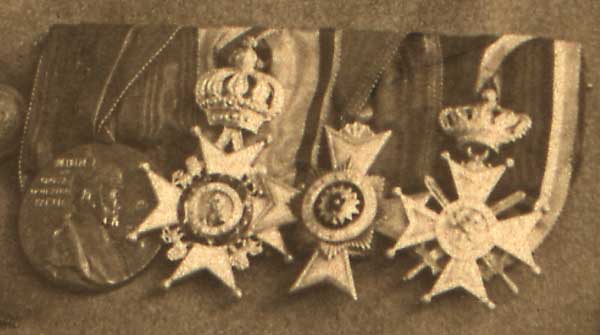
For what it is worth, the shoulder strap in detail:
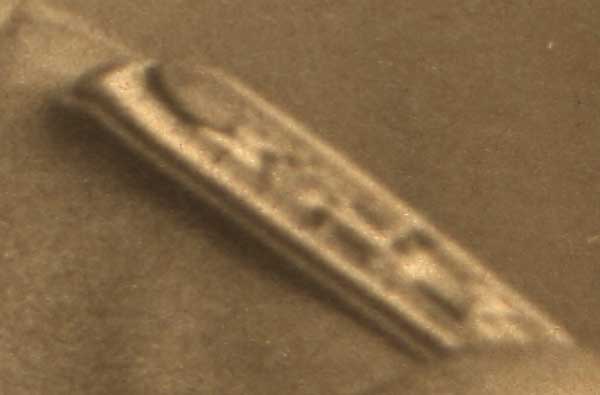
Was he a Saxon on loan to a Lippe regiment? Why is he not wearing any service award (1897-1914)?
What can the rank list and medal bar experts come up with?
Thanks for your comments in advance,
David


 0
0 -
The court mount from the back showing the typical Saxon ribbon folding style:
[attachmentid=15076]
The back of the medal:
[attachmentid=15078]
Andreas Schulze Ising has a good article on the Saxon service awards on his site at http://www.medalnet.net/.
I am sure I have some award documents for the Prussian bars, but seem to have misplaced them. Does anyone have examples of the award documents for the Saxon bars and medals?
David
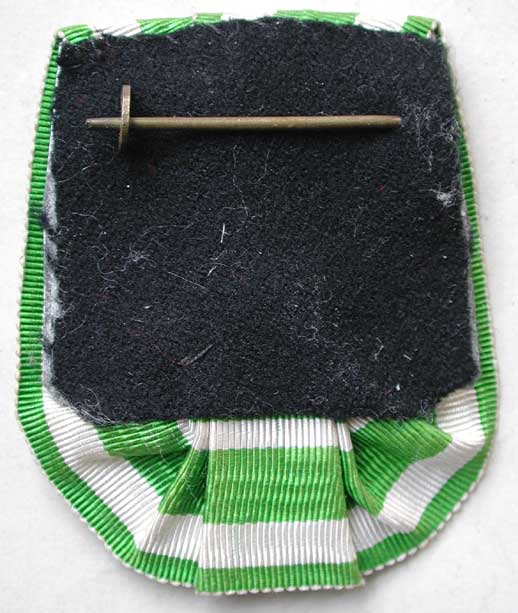
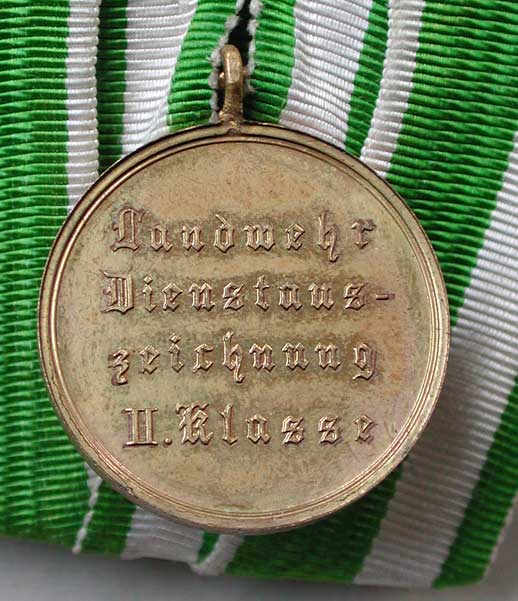

 0
0 -
When the Prussians replaced their bars with medals and crosses in 1913, the Saxons followed suit and the bar shown above was replaced by a medal according to the statute of 6 September 1913.
The ribbon remained the same as for the Schnalle. The medal was made of copper and seems to be plated. Many owners of the Schnalle purchased the medal and wore it instead.
The shape, size and script is much the same as the Prussian Landwehr service medal.
Although it doesn't really belong in this thread (i.e. it is not a bar), I am posting this example of a single court-mounted medal for the sake of continuity.
[attachmentid=15075]
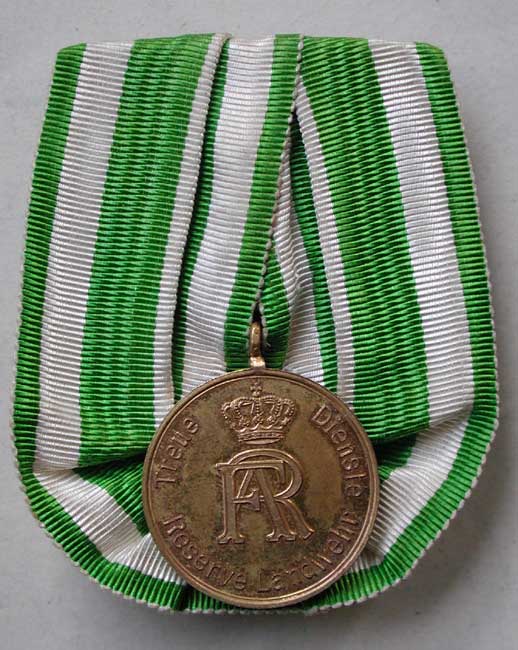
 0
0 -
Saxon Landwehrdienstauszeichnung 2. Klasse issued from 1874 to 1913:
[attachmentid=15072]
[attachmentid=15073]
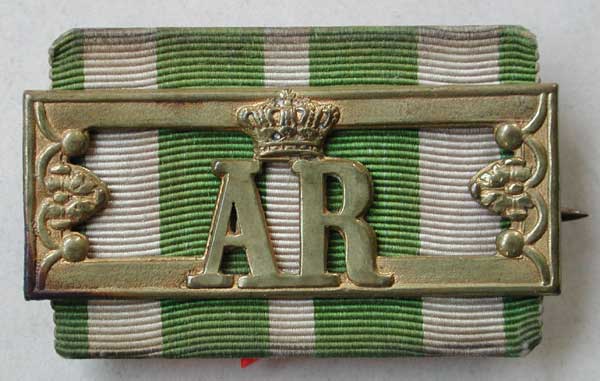
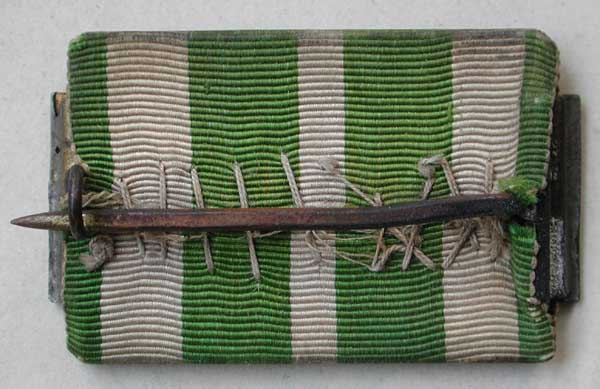

 0
0 -
The reverse seems to have been repaired with sealing wax:
[attachmentid=15070]
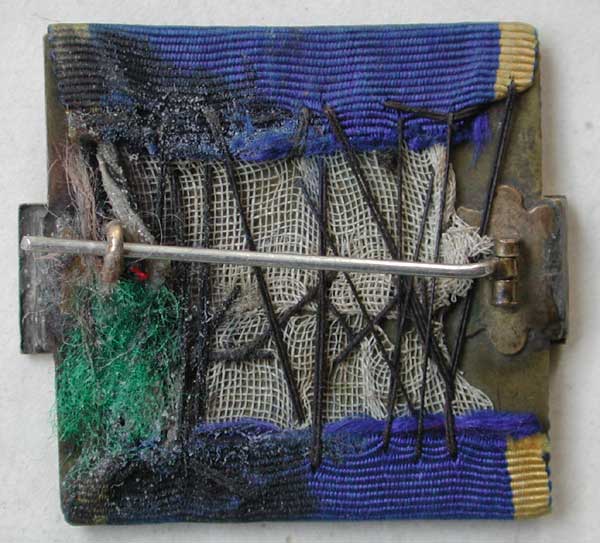
 0
0 -
The Dienstauszeichnung 1. Klasse awarded until 1913 for 21 years service:
[attachmentid=15069]
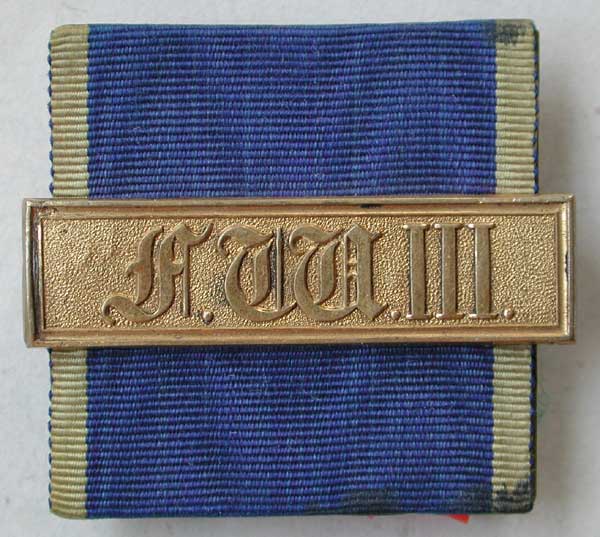
 0
0 -
The Dienstauszeichnung 2. Klasse awarded until 1913 for 15 years service:
[attachmentid=15067]
[attachmentid=15068]
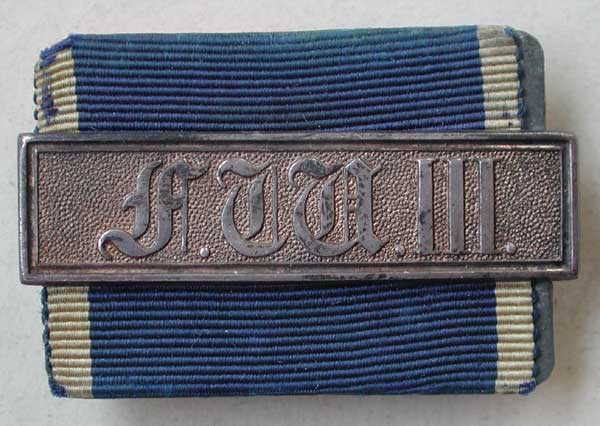
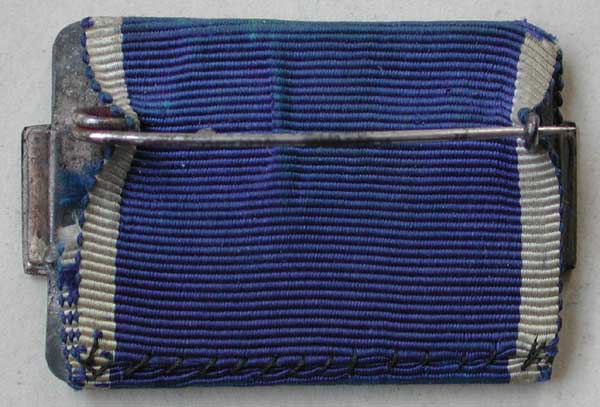

 0
0 -
The Prussian Dienstauszeichnung 3. Klasse awarded until 1913 for 9 years service:
[attachmentid=15065]
[attachmentid=15066]
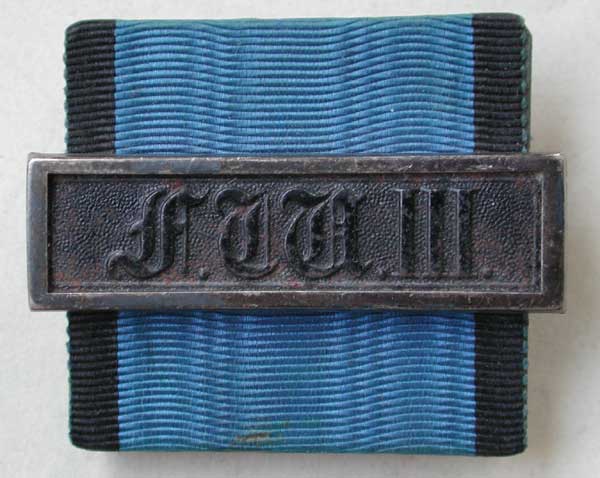
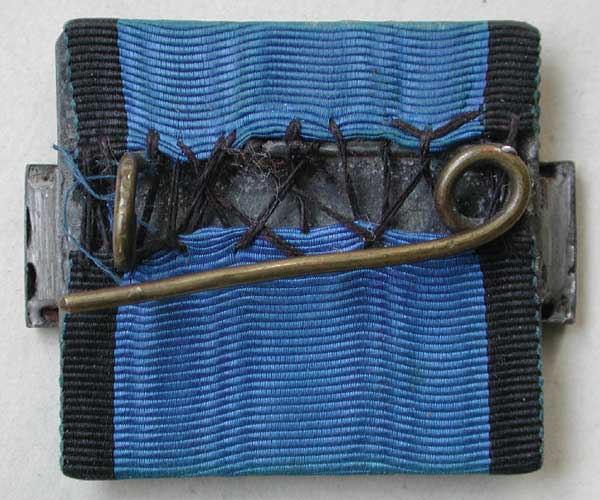

 0
0 -
Tony,
Aren't they still issued like this?
I am sure one the "horse crowd" has shown one of these in the office recently.
David
0 -
Dave,
Thanks for your comments. Since most of the paperwork I have relates to enlisted men and NCOs, with only a few officers, I am trying to distinguish between the "low-end" awards and avoid having to write them all out in full. At the same time, I would like to use generally accepted and commonly used abbreviations for the sake of consistency with contemporary literature.
Incidently, for the Bremen Hanseatenkreuz I probably have paperwork for about 7 or 8 men in the form of loose award documents and various entries in Milit?rp?sse and Soldb?cher. It still remains one of the least common awards among some 400 men whose paperwork I have.
David
0 -
I offer my apologies for straying off topic.
Like many others (I suspect), I know too little about these pieces to make a decision with any confidence. Although I am unlikely ever to acquire one (but never say never), I would like to know more about them and be able to form an opinion of my own.
0 -
Again, the question that no one will answer and begs to be answered
IF DIFFERENCES IN THE WREATH AND MAKER MARK FROM KNOWN ORIGINALS DO NOT CONSTITUTE A FAKE, WHAT DOES?
Differences to a known original might indicate that the piece is a fake, however, they might equally indicate that the piece is simply as yet unknown. By your reasoning, anything which is different and unknown is a fake. Of course I agree that there are poor fakes that are likely to fool only complete beginners, but I cannot automatically condemn things out of hand just because I have not seen one before.
It is stated above that it is a fake only if we know where it came from. Is that reasonable? I would say that the vast majority of fakes are of unknown origin. Also, it is stated that when there is "provenance" it can be accepted as real. What fake does not have a "vet acquired" story behind it?
I did not state that an item is only a fake if it is known to come from a bad source, I did state that there can be no doubt about it in such cases. I agree that the vast majority of fakes are of (to us) unknown origin. In my view, that does not automatically make any item of unknown origin a fake. My statement was not an absolute ruling on what is and is not a fake.
The Klein fake has been hashed over by experts on the DKiG and felt to definately be a fake. There is no question. Incidentally, no one knows where it came from, yet by the criteria above, it would be embraced as rreal becuase it is of unknown origin and does not share characteristics of authentic pieces. Heck, Detlev feaatured it once as his fake of the week.As I am not an expert by any stretch of the imagination, I would assume that the experts (whoever they may be) are probably right. My criteria do not dictate that a previously unknown and "different" item is real. I simply believe that logic dictates that it might just as easily be real as well as fake. Both are very real possibilities, neither of which I would discard out of hand.
It is important to establish SOME characteristics of observation to avoid a situation like that created with the rounder. Otherwise, twenty years later we will be forced to pursue expensive SEM and IR spec work to PROVE that a piece is definately fake when the visual characteristics suggested that decades before. Let us spare other collectors the expense of being saddled with fakes and tackle this issue early to prevent the propogation and sale of this piece.A scientific approach (with or without laboratory equipment) is laudable and helps to provide evidence for or against a particular item. To be honest, I stopped following the debate on the rounder when, in my view, conclusions were drawn on the basis of flawed logic despite the presentation of apparently sound scientific evidence.
This issue should not be subjective. It should be fairly cut and dried.Unfortunately, the issue seems to remain highly subjective. In my view, conclusions can only be cut and dried when we know all the facts. However unpalatable it may be for some people, I don't think we ever will know all the facts. For that reason, I prefer to steer clear of something that I will never be sure of. If someone else wants to make the leap of faith and is satisfied with what is known so far, then that is his choice.
If we agree that if a piece has a different wreath and maker mark, then it is a different piece. Other fakes have "20" stamps as well. Some are better quality than the dotted DKiG, yet they are recognized as fakes.Yes, we can agree that it is different. I am not disputing the fact that it might be bad. However, I think we disagree that this automatically condemns it as a fake, the possibility of which I will not rule out.
The only difference we have here is that THE DEALERS are TELLING US that this piece is real. What about Ivan or Pieter? They are not dealers and have stated that the dotted DKiG is a fake. Why? Becuase THEY ARE NOT TRYING TO SELL THEM.Despite what dealers tell me, I still have the choice not to buy their goods. Perhaps Ivan or Pieter know something that the rest of us don't. The body of opinion (evidence?) presented so far suggests that these items are not good, which certainly puts me off even considering buying one.
Given the risks involved in investing in a DK, I would only ever consider one with sound provenance. If that means that I will probably never be able to find or afford one, then I will happily do without a DK and stick to Imperial documents. But that is my choice.
David
0 -
Thanks for the additions Rick.
Do you also have abbreviations for the following:
Hessen Kriegsehrenzeichen
Hohenzollern silberne/goldene Ehrenmedaille mit Schwertern
Lippe-Detmold Kriegsehrenmedaille
Lippe-Detmold Milit?rverdienstmedaille
Sachsen Albrechtskreuz (with and without swords) in silver
Sachsen gold and silver medals of the Saint Henry Order
I also have a document to another Schwarzburg award the name of which escapes me at the moment, but I'll add it over the weekend.
Is there a general convention on how to indicate awards on non-combatant ribbons or did each state do its own thing?
It might be arcane gibberish to some people, but I am slowly understanding all of these awards even better. This will certainly go a long way to replace the pages explaining the abbreviations that were removed from my 1912 rank list.
Once again, many thanks in advance,
David
0 -
This one is a recent addition from Tony. A Prussian Landwehr but I don't know what period of service it represents. Maybe Tony can help me out.
Bob,
I think this is one (probably the second) of two types of Prussian 3rd class award issued between 1825 and 1913 for 9 years of service in the regular army. The Landwehr version is similar, but not the same.
Like the second (silver for 12 years) and third (gold for 15 years) classes, this style of award was replaced by the round medals (9 and 12 years service) and crosses (15 years service) that are more commonly seen on medal bars from 1913 until 1920.
Christian shows the second class award in post #4 and Tom shows all three classes in post #7 together with a Landwehr award (centre right).
David
0 -
Specifically, the list lacks "low-end" awards for at least the following:
Anhalt
Thuringian duchies' own awards
Baden
Mecklenburg-Strelitz
Sachsen-Weimar
Hohenzollern
Reuss
Lippe-Detmold
Schaumburg-Lippe
Schwarzburg
Waldeck
Any help would be greatly appreciated, as cataloguing award documents, Soldb?cher and Milit?rp?sse with the full names of the "minor" awards will otherwise take me years. I would like to use a set of abbreviations that were either commonly used in the various rank lists or something very similar.
Thanks,
David
0 -
Rick,
Can that topic be re-opened so that we can add some of the variants and, more importantly for me, some of the awards given to lesser mortals such as enlisted men and NCOs?
Thanks in advance,
David
0 -
I can't discuss the specifics of the Klein pieces, or any other DKs for that matter, because I don't know enough about them (yet, I hope).
When the sources and suppliers of items such as the Latvian RKs are known, then there is no doubt about them being generally accepted as fakes.
There is an enormous spectrum between known fakes (e.g. Latvian RKs) and pieces that cannot be proved to be bad, but which most serious collectors avoid like the plague.
Between and beyond those two poles there are almost certainly items that are in fact fakes, but not recognised or generally accepted as such, and may remain undiscovered for a long time (forever even?). By the same token, there are almost certainly authentic items that have been discussed and contended to the point where no one wants to have them, even if they are good.
While I can't argue for or against the Klein DKs you discuss here, I am not prepared to dismiss them out of hand because they don't fit the little information that I accept as reliable.
Perhaps some changes were made on a whim, or for reasons we will never know. Neither you nor I, unless one of us knows something the rest of the world does not, can give a reason why one manufacturer made changes, but another did not.
As far as I am concerned, there is not enough reliable information available on these pieces to make a decision either way. Until more comes to light, I prefer to regard them with the same suspicion as other expensive Third Reich awards - they are prone to much faking and I refuse to treat them as cut and dried. We simply don't have enough information and comparisons and speculation about them will remain just that.
I accept fakes known to have been made and supplied by a purveyor of fakes. I also accept original items known to have come from the men (or their families) that received them. Within certain limits (my own definition), I will also accept items identical to the latter with a certain margin of deviation. All the rest remains very much a grey area - we will probably never know.
That is why I mainly stick to inexpensive Imperial documents and awards that give me hours of research pleasure, rather than worrying about an anonymous piece of metal that I can never be sure about.
Each of us must make his own decision about what he is prepared to accept as real (by your definition no different to what you are happy with). Other collectors, and dealers for that matter, may or may not agree with you, but that is their choice. Collecting militaria is not an exact science and absolutes tend to be more a matter of opinion rather than fact.
0




brest,street fighting
in Battlefields, Bunkers & Concrete
Posted
In my experience, there is no particular nation that cares little for the impact of history on its immediate neighbourhood.
Here in Germany, attitudes towards towards history tend to be polarised. It is either something that people are prepared to discuss, or a subject best avoided.
Only a few of my non-collecting friends appreciate my interest in what happened on European battlefields, most of which are easily within driving distance.
People who live in areas where the legacy of war is still apparent, either in the form of cratered landscapes or frequently visited memorials, tend to be aware of what happened in their neighbourhood.
From the impressions I gained in the spare time I had during a business trip to Berlin two weeks ago, I guess most people are very much involved in their day-to-day lives and do not dwell in the past as much as militaria collectors and military history enthusiasts, who must represent a very small part of the general population.
While I seem to have a compulsive curiosity for anything old and remotely connected with (military) history, most of my friends, neighbours and colleagues either ignore or simply do not see the things that stop me in my tracks.
I certainly enjoy these then-and-now threads and the "ghost" images are the icing on the cake.